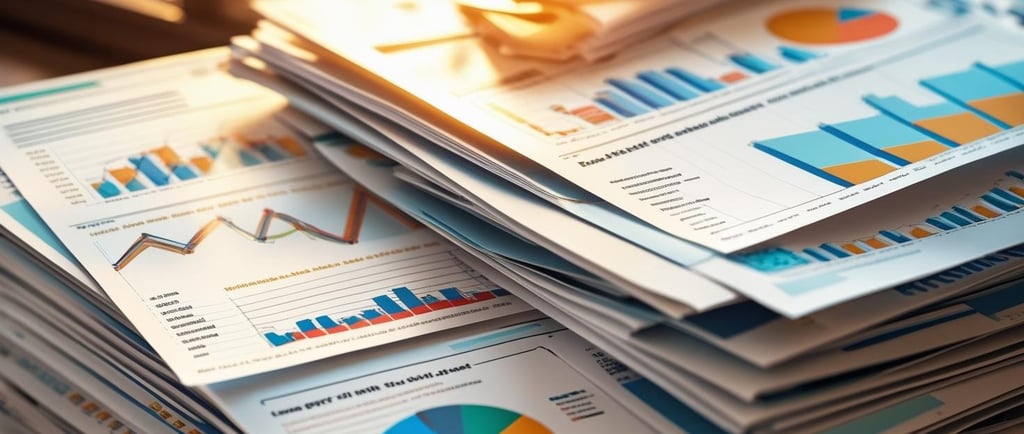How to Build an Emergency Fund in 2025 (Even If You're on a Low Income)
Learn how to build an emergency fund in 2025—even if you’re broke or living paycheck to paycheck. Realistic, practical steps for saving your first $1,000.
Jason Brooks — Financial Writer at Finovista
8/4/20253 min read


How to Build an Emergency Fund in 2025 (Even If You're on a Low Income)
No one expects a flat tire, a medical bill, or a broken laptop… but life happens. That’s why every American — no matter how much they earn — needs a basic emergency fund.
In 2025, with rising costs and economic uncertainty, having a financial cushion isn’t optional. It’s essential.
The good news? You don’t need thousands of dollars to get started. This guide walks you through how to build an emergency fund from $0 — even if you’re living paycheck to paycheck.
💡 What Is an Emergency Fund?
An emergency fund is a stash of money set aside to cover unexpected expenses, such as:
Car repairs
Medical bills
Job loss
Appliance breakdowns
Travel for family emergencies
It’s not for vacations, shopping, or monthly bills. It’s your financial safety net.
🎯 How Much Should You Save?
Start small. Then build.
✅ First Goal: $500–$1,000
✅ Next Goal: 1 month of living expenses
✅ Long-Term Goal: 3–6 months of expenses
The goal isn’t perfection — it’s progress.
🪙 Step 1: Open a Separate Savings Account
Keep your emergency fund away from your main checking account so you don’t spend it by accident.
Choose:
A high-yield savings account (like SoFi, Ally, or Capital One)
No fees, easy access, but not too easy
Give it a name like “Emergency Only” to remind yourself why it’s there.
💸 Step 2: Start With Small, Automatic Transfers
You don’t need to save $1,000 overnight. Start with:
$1–$5 per day
$10–$25 per week
$40 from each paycheck
Set it and forget it. Automation is the secret to building savings without thinking about it.
🔍 Step 3: Cut One Expense and Redirect That Money
You don’t have to cancel everything — just start with one.
Example:
Skip 2 Starbucks runs per week = save $10
Cancel a $12.99 subscription = save $155/year
Pack lunch 3 times a week = save $30/week
Put those savings directly into your emergency fund.
🛒 Step 4: Use Cash Back & Spare Change Apps
Don’t let your change go to waste. Use apps that save for you:
Acorns: Rounds up purchases to the next dollar and saves the difference
Rakuten or Ibotta: Get cash back on groceries and online shopping
Chime Save When You Get Paid: Auto-save a % of your paycheck
These can add up fast without changing your lifestyle.
🧠 Step 5: Treat It Like a Monthly Bill
Add your emergency savings to your budget just like rent or utilities.
If your monthly income is $2,000, aim to save just 2–5% ($40–$100) per month.
You can’t “wait until there’s extra.” Pay your emergency fund first, even if it’s small.
📌 Where to Keep Your Emergency Fund (Don’t Skip This)
✅ High-yield savings account
✅ No investment accounts (like stocks or crypto — they’re too risky!)
✅ Avoid prepaid cards or cash under your mattress (no interest, not secure)
You want access within 1–2 business days — not instantly, but not locked away either.
❌ When NOT to Use Your Emergency Fund
Black Friday deals
Late-night Amazon scrolling
Friends’ birthday dinners
Concerts or vacations
Ask yourself:
“Is this truly unexpected and necessary?”
If not — don’t touch the fund.
📈 Bonus Tip: Celebrate Milestones
Saving money is hard — especially if you’re starting with very little.
So when you hit your first $100, celebrate.
When you hit $500, treat yourself (responsibly).
Celebrate progress. It keeps the habit going.
🔁 What If You Use It?
That’s what it’s there for!
If life hits you with a bill and you use the emergency fund — don’t feel bad.
Just rebuild it with the same steps you used to grow it.
📌 Final Thoughts: Protect Your Peace, Not Just Your Wallet
An emergency fund won’t solve every problem, but it gives you one thing money usually can’t: peace of mind.
You’ll sleep better knowing that you can handle life’s surprises — without panic, stress, or going into debt.
So start small. Stay consistent. And give your future self the gift of financial security.
👉 Follow Finovista for more real-life money tips that fit your life — not just your budget.
Finance
Your go-to source for smart finance tips.
Blog
Tips
+1 (646) 555-0198
© 2025. All rights reserved.